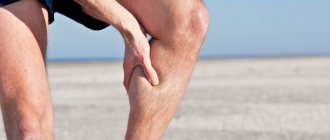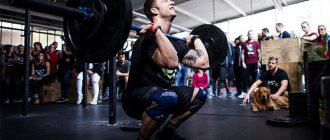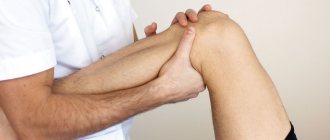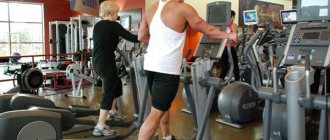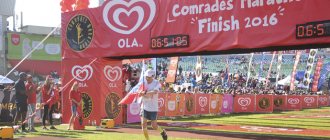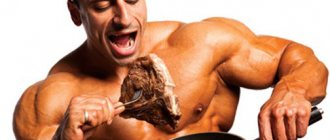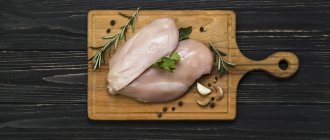The basis of a healthy lifestyle is physical activity. Doctors recommend walking in the fresh air for at least half an hour a day, going to the gym, swimming and doing yoga. However, what should you do if, after training that is beneficial for your body, you are unable to get out of bed due to severe pain? We tell you why this happens and how you can get rid of pain quickly and pleasantly.
Muscle pain after exercise is common
Krepatura: definition
Often the decision to take up sports comes suddenly and is accompanied by a crazy dose of motivation. On the same day or the next, you go to the gym or stadium and give your all 100%. Sweaty but happy, you return home, realizing that you are healthier and stronger than yesterday. However, soon the euphoria from the workout is replaced by body aches, the inability to bend and straighten the limbs, and pain during body movements. Severe fever has knocked on your door.
Krepatura is muscle pain associated with physical activity. It is felt after performing atypical exercises without regular repetitions. Most often this includes push-ups, pull-ups and any loads with weights. Muscles have to sharply stretch and contract under the influence of external forces. Soreness is an indicator of how much you have strained your muscles and joints. The stronger the post-workout pain, the more stress the muscles experienced.
possible localization of muscle pain
Signs of the disease
The causes of severe weakness are due to functional disorders of the autonomic nervous system and are similar in symptoms to organic diseases of the organs or system. The patient feels constant fatigue, unmotivated irritation and aggression. Concerned:
- absent-mindedness;
- sweating;
- sudden trembling throughout the body;
- tremors in the hands, nerves in the legs:
- cloudy head;
- lack of concentration;
- panic fears, dizziness;
- sleep disorders, dark circles under the eyes.
The patient is unable to adequately perceive space and information from the environment. Sometimes they worry:
- arrhythmia or cardiac arrest as after coffee;
- weakness in the neck;
- lump in the throat;
- symptoms as in cervical osteochondrosis - pain in the back of the head, head.
At the moment of an attack, your hands fill with lead, your legs become weak. A person has only one desire - to lie on the sofa and curtain the windows. When the weather changes, migrating pains are annoying. Symptoms may alternate or overlap. Trembling of the limbs gives way to cramps and body aches.
General weakness of the body and a heavy head are the main symptoms by which the pathology is diagnosed, which occurs in 97% of cases in children and adults. Due to nervous conditions or endocrine disorders, the disease develops in a teenager after stress or during puberty due to hormonal surges. The same factors serve as a trigger for the development of VSD in men and women of all ages.
Causes of muscle pain
In a normal state, all tissues of the body consume oxygen at a predetermined intensity. Under the influence of sudden muscle contractions during exercise, oxygen begins to be consumed at a faster rate. Often cells are not ready to spend so much oxygen, since before this there were no prerequisites indicating that reserves need to be increased. Hypoxia occurs, due to which the muscles are forced to switch to another, emergency method of obtaining energy - anaerobic glycolysis.
Anaerobic glycolysis is the conversion of glucose into energy in an oxygen-free environment. As a result, two substances are released - ATP molecules, which provide energy, and lactate, a derivative of lactic acid. It is the second component that leads to muscle soreness after physical activity.
Under conditions of unexpected stress, the level of lactate in cells increases several tens of times. At the same time, in a normal state, lactic acid is useful to the body and is responsible for the process of reverse glycolysis in the liver.
anaerobic glycolysis
Post-workout pain may be felt due to microtrauma in the muscles. When performing pulling exercises or after a fast run, the myofibrils in the muscles - the elements responsible for muscle contractions - become very tense. If long myofibrils can withstand the load, then short ones quickly break. This is what causes pain.
Why do muscles hurt?
During training, the familiar burning sensation is the result of the formation of lactic acid in the muscles. It is a product (metabolite) of the oxygen-free breakdown of glucose in muscles. They need to somehow obtain energy when a sufficient amount of oxygen does not pass through them.
After training, there is no longer a burning sensation, the muscles are moderately sore. For several hours, the muscles experience pleasant fatigue from a lack of nutritional material and energy. When reserves are restored, fatigue goes away. It may take 4-6 hours until this point. The strength is felt again in the muscles, but now it becomes painful.
Anabolic pain is a sign of a good workout. Its presence means that you have given your muscles the load that will lead to progress. This pain goes away up to 7 days. And this period depends on the level of training of the student. If you've tried a new program or are new to the program, you will experience delayed muscle soreness that lasts longer than normal post-workout anabolic soreness.
Bad pain occurs immediately after exercise, or within a few hours. While the body is hot, you may not feel the full force of this pain. Then, when you have rested, been in a sedentary state for some time (two hours at the computer), then you will feel post-traumatic pain in all its glory. Especially after a sudden habitual movement.
Types of pain after training
The release of lactate directly depends on the intensity of the workout. However, inexperienced athletes often confuse intensity with efficiency. The established opinion that muscle pain is a sign of high-quality muscle work is fundamentally wrong. Don’t worry and stop exercising if you feel severe discomfort after the first time. It is important to understand a few points so that this does not happen again in the future:
- Muscle pain is really not an indicator of the effectiveness of the exercise . Because it can be caused by various reasons and even consist of diseases existing before training. It is important to consult with your doctor and coach before setting Olympic records in the gym.
- Lactic acid and glucose are substances not alien to the body. They are always present in muscles and tissues, and their single release means stress, but is quickly leveled out. Typically, a characteristic burning sensation appears at the end of the approach. At this point, the body is at its limit, pushing hard for the last rep, and lactic acid-induced pain sets in. At such moments, you can and should always stop . The body itself tells you your capabilities at this stage, and you definitely won’t become healthier by increasing repetitions or speed. Discomfort may last throughout the workout and for 2–4 hours afterwards.
But our body knows how to cope with stressful conditions. At the end of physical stress, the blood flow restores its previous speed and begins to flush out the resulting lactate reserves from the tissues. It goes away along with sweat and urine, and gradually the pain subsides.
pain during exercise
A slightly different mechanism for the increase and relief of pain occurs if discomfort occurs the next day and lasts about 1-2 days. This phenomenon is called delayed pain .
Delayed pain is unpleasant in the context of normal life activities. It is difficult to get up and go to bed, climb stairs and raise your arms. The worst thing is that such pain deprives you of any motivation to continue exercising. After a person begins to feel comfort in his muscles again, he comes to the gym and again may experience pain, since there was a long break between workouts.
Late pain is caused by microtrauma associated with myofibril ruptures. Immediately after the rupture, no pain is felt, but the next day a slight inflammation in the muscles begins. There is no need to panic in this situation. Inflammation of muscle fibers is not associated with infection and microbes. Discomfort is caused by tissue reaction to stress. After 1-2 days, the tears will heal and muscle mass will grow. You will be able to return to your normal lifestyle.
How to get rid of muscle pain: physical and skincare treatments
It is believed that the best medicine for the onset of sore throat is time. Indeed, the body needs time to flush out excess substances and heal minor injuries in the muscles. But you can speed up this process thanks to a few simple rules.
- Movement is life . When your body aches in pain and every movement becomes a painful ordeal, you want to lie down and not get up for several days. However, it is important to keep moving to speed up your recovery. It’s better to forget about intense training for a while, but no one has canceled walks. You can take care of your body immediately after training. A 2012 study found that athletes who performed low- or moderate-intensity sets immediately after exercise experienced less muscle pain. Relax, sit or lie in a comfortable position, restore your breathing and slowly stretch every inch of your body. The next day you'll be grateful you took the time to do this.
- Stay warm. After major operations, doctors send patients for warming so that the sutures heal faster. You can perform the same manipulations with microtraumas. If you are experiencing delayed pain, try warming up your muscles after exercise. Gentle stimulation will increase blood flow, relieving soreness and making you feel better. To do this, run a warm bath and add Epsom salts to the water. Magnesia weakens spasms and relieves pain. It is important that the water is not scalding, otherwise you may get burned. If necessary, you can repeat several times a day.
thermal procedures with salt
- Drinking and food regime. Excess lactate is eliminated from the body through sweat and urine, which means the same rule applies here as with respiratory diseases: if you drink more, you will recover faster. The water norm can be calculated using the formula: every kilogram of body weight multiplied by 30 milliliters of water. The final amount should be consumed within a day. You also need to watch your diet. Pay attention to foods high in vitamins A, C and E. These include natural oils, green and yellow vegetables, eggs, and fish. The more of them you have in your daily diet, the easier it will be to bear the pain from training. A bonus from the resulting protein will be an increase in muscle mass.
- Cold and hot shower . Changing the temperature during water procedures will tone the muscles and speed up blood flow, which will contribute to a speedy recovery.
Remember : if the pain does not go away seven days after training, and severe swelling appears in the arms and legs, you should immediately consult a doctor. An accumulation of oxygen can form in the cells, which will lead to oversaturation of the body and poisoning of myoglobin proteins. It is responsible for oxygen transport and kidney function. Due to poisoning, an important organ may become damaged or even fail.
swelling in the legs
It is important to pay attention to care procedures. First of all, try a massage. This can be either a relaxing session with a massage therapist or self-massage at home. They relieve muscle tension, increase blood flow and improve joint mobility. For muscle pain, turn to gentle techniques. Study the points of the body responsible for different organs and tissues. Light pressure is preferable to deep tissue massage for muscle recovery.
As a massage oil, use a mix of oils from Epsom.pro. It contains eight oils, each of which is responsible for an individual restorative function. Wheat germ and rice bran oil saturates the skin with amino acids. Orange removes excess fluid from tissues, maintaining hydrolipid balance. Almonds relieve pain and relieve mild cramps. Citrus oils of lemon, lime and lemongrass restore reddened skin to a healthy appearance and even tone. Jojoba oil will correct stretch marks and cellulite deposits.
relaxing oil massage
Taking a relaxing bath is an essential ritual when recovering from workouts. It is better to replace the usual foam with natural salts. Magnesia is perfect. Epsom salts are a natural source of magnesium, which is not synthesized by the body itself. In turn, this component is part of more than 300 enzymes. It is responsible for the functioning of the nervous system, sound sleep and mood. Magnesium salts have a pain-relieving effect on tense muscles. Thanks to their small molecules, they easily penetrate the skin and trigger regeneration processes in it, which has a positive effect on metabolism and fat burning.
Epsom bath salts
The “Muscle care” bath shimmer will take you on a long-awaited journey. Imagine how in a warm bath you feel the aromas of the morning winter forest. Refreshing mint and a coniferous shade of juniper are responsible for this. The mixture will gently relieve tension from muscles and joints and speed up the healing of injuries. The essential oils contained in the salt accelerate blood flow and relieve headaches and spasms. Juniper esters have bactericidal properties and improve immunity. This is especially true if after training you accidentally come under the powerful air conditioner of the gym. The contrast of a hot bath and the pleasant chill of the mix will give you the desired relaxation and restore your body.
salt with mint and juniper oils
The benefits of one type of salt are invaluable, but in combination with other compounds it can work wonders. We recommend trying a mix of Epsom salt, pink Himalayan salt and Dead Sea salt. It is no coincidence that this composition is called “All Desires”. Salt consists of 99.5% natural substances, namely magnesium sulfate and naturally occurring sodium chloride. They contain bromides, zinc and more than 80 other elements necessary for rapid muscle recovery and maintaining overall body tone. Magnesium in Epsom salts acts as a vasodilator. Sea salt contains components that have antiseptic and smoothing effects. Iodine impurities are responsible for increasing immunity. Pink Himalayan salt will relieve tension after a hard day on the move, and will have a calming and anti-inflammatory effect. The skin will get rid of toxins and impurities, the pores will expand so that excess moisture comes out faster.
mix of three salts
A high concentration of magnesium is concentrated in magnesium oil. The product is multifunctional: it can be added to the bath, used as a massage lotion or sprayed in the room. It relieves muscle tension and has a healing effect, which is so necessary after an intense workout. Magnesium chloride, when used regularly, will strengthen your joints. Subsequent workouts will be easier to bear.
magnesium oil
